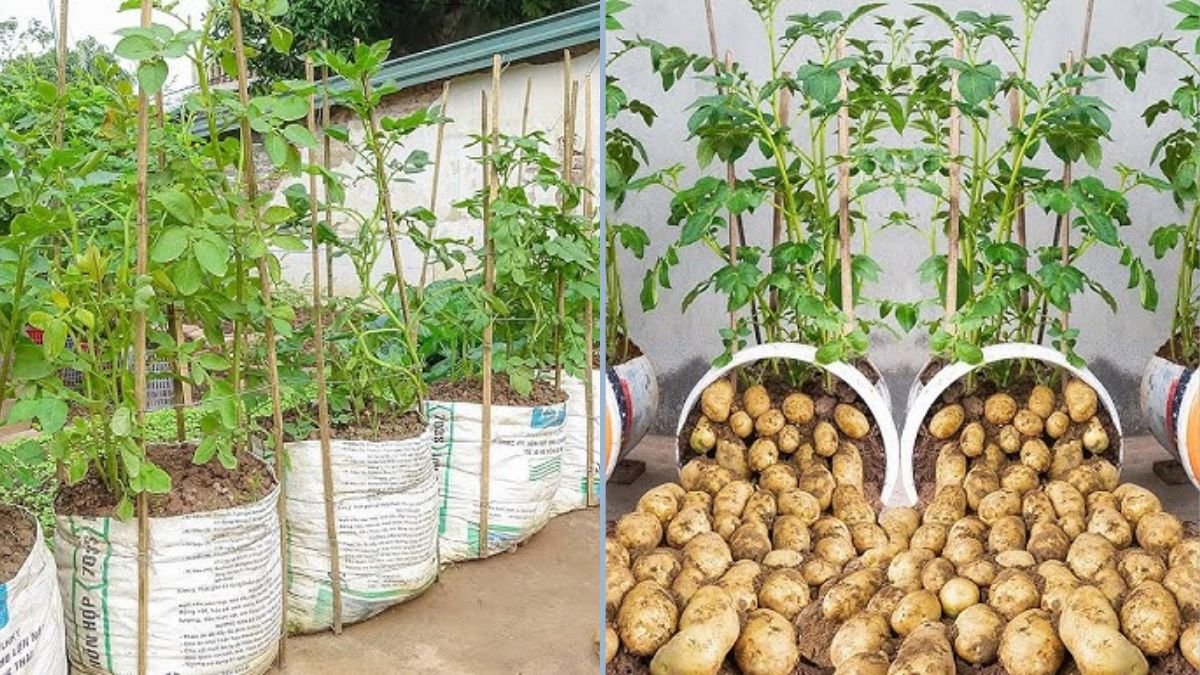Potatoes are one of the most popular and versatile crops for home gardeners. They are nutritious, filling, and can be prepared in countless ways—from mashed, roasted, and fried to stews and soups. While planting potatoes is relatively straightforward, maximizing your harvest requires a bit more strategy. One of the key techniques to boost yield is pruning potato plants alongside proper planting and care.
In this guide, we’ll explore everything you need to know about growing and pruning potato plants to achieve bigger, healthier harvests. Whether you are a beginner or an experienced gardener, these tips can help you increase potato production and enjoy a rewarding harvest.
Why Pruning Potato Plants Matters
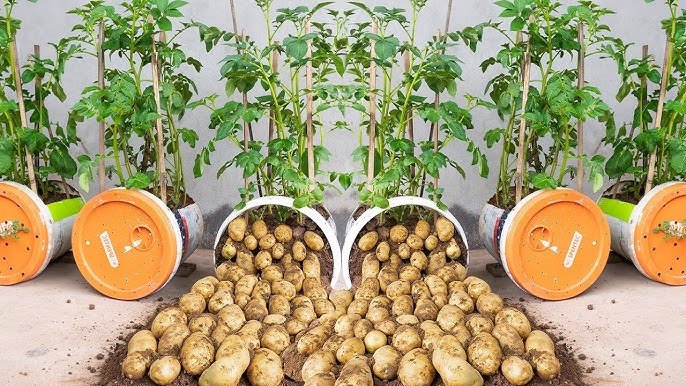
Most people assume pruning is only for flowering plants or trees, but potato plants also benefit from selective trimming. Pruning helps in several ways:
- Encourages More Tubers: Removing certain leaves and stems allows the plant to focus energy on producing potatoes underground.
- Improves Air Circulation: Trimming excess foliage reduces humidity around the plant, lowering the risk of fungal diseases.
- Promotes Sunlight Penetration: More sunlight reaches the lower stems, stimulating tuber growth.
- Prevents Overcrowding: Healthy spacing ensures stronger stems and bigger potatoes.
Proper pruning combined with standard potato care practices can significantly increase your yield and produce healthier, more uniform tubers.
Materials You’ll Need
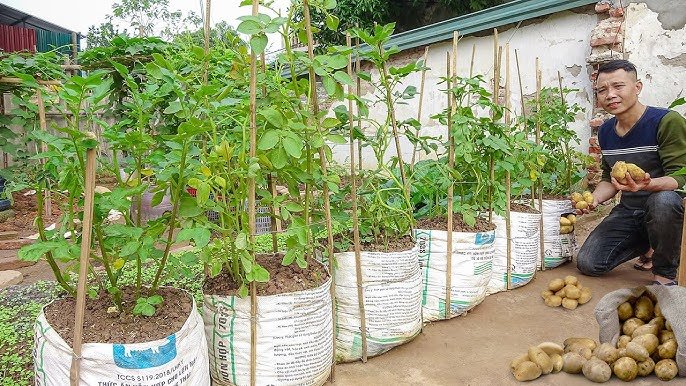
Before planting and pruning, gather the necessary materials:
- Seed potatoes (certified disease-free varieties are ideal)
- A garden plot, raised bed, or large container
- Compost or well-rotted manure
- Fertilizer (optional, for maximum production)
- Gardening tools: trowel, pruning shears, gloves
- Water source (hose or watering can)
Having the right materials and tools ensures that your potato plants have the best chance of thriving and producing a big harvest.
Step-by-Step Guide to Growing Potato Plants
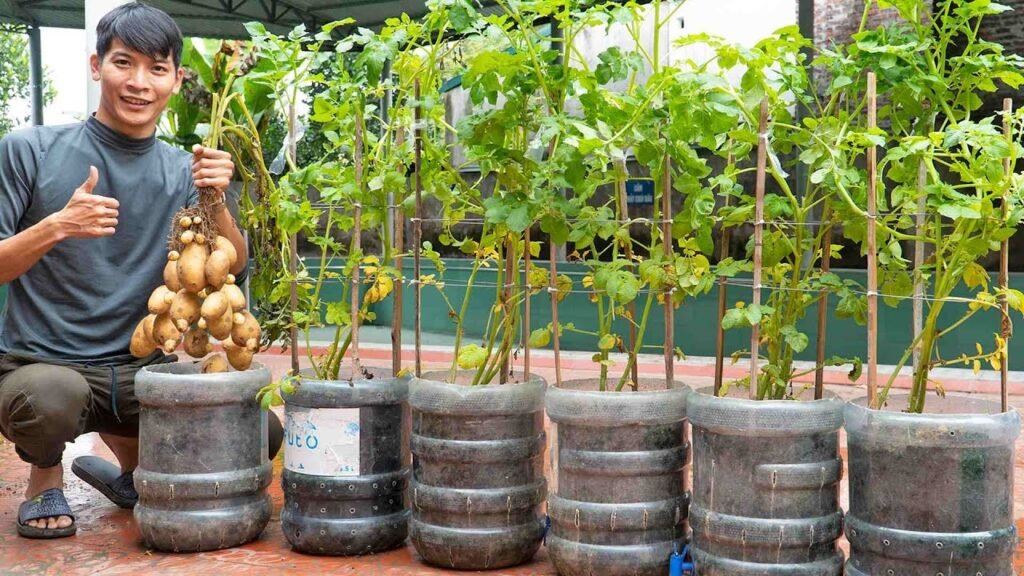
1. Choose Healthy Seed Potatoes
Select certified, disease-free seed potatoes. Avoid store-bought potatoes treated with sprout inhibitors. Cut large seed potatoes into pieces with at least one or two eyes per piece. Allow cut pieces to dry for a day or two to reduce the risk of rot before planting.
2. Prepare the Soil
Potatoes prefer loose, well-draining soil with a slightly acidic pH (around 5.5–6.5). Enrich the soil with compost or well-rotted manure to provide nutrients for robust growth. Avoid compacted soil, as this can restrict tuber development.
3. Plant the Seed Potatoes
Plant potato pieces 4–6 inches deep, spacing them 12 inches apart in rows with 24–36 inches between rows. Place the eyes facing up. Proper spacing prevents overcrowding and allows air circulation, which is critical for pruning and plant health.
4. Watering and Care
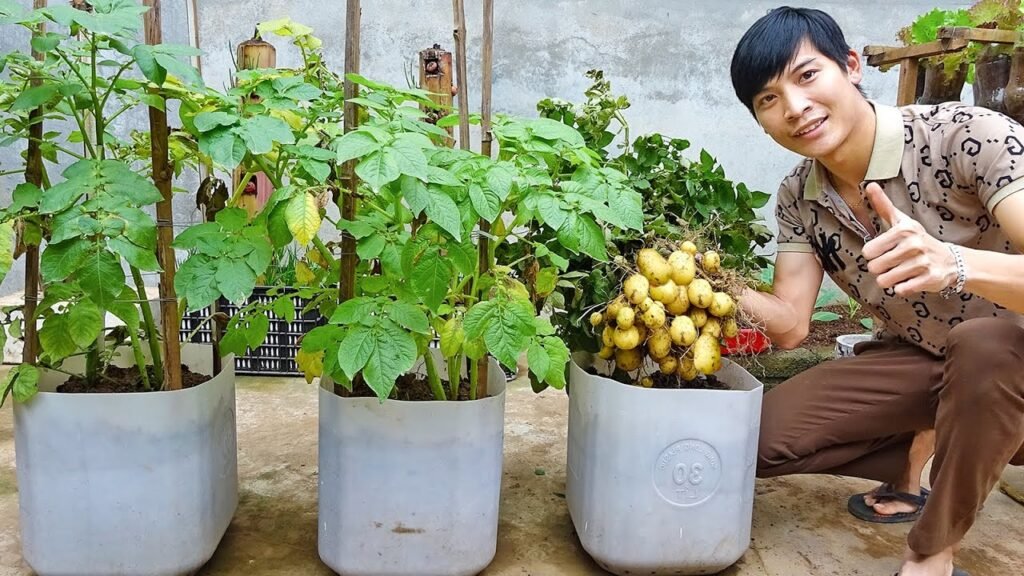
Keep the soil consistently moist but not soggy. Potatoes require regular watering, especially during flowering and tuber formation. Mulching can help retain soil moisture and prevent weeds.
Apply balanced fertilizer or compost tea every few weeks for maximum production. Be careful not to over-fertilize, as excessive nitrogen can lead to lots of foliage but fewer potatoes.
Pruning Potato Plants for Bigger Harvest
Pruning is often overlooked but can dramatically improve potato yields. Here’s how to do it effectively:
1. Hilling
Hilling is a form of pruning where you pile soil or mulch around the base of the potato plant as it grows. This encourages more tubers to form along buried stems and prevents greening of tubers exposed to sunlight. Repeat hilling every few weeks until the plant reaches about 12 inches in height.
2. Removing Excess Foliage
Once the potato plant is about 12–18 inches tall, selectively prune some of the older, lower leaves. Focus on:
- Removing yellowing or damaged leaves
- Trimming excess foliage that blocks sunlight
- Encouraging airflow around the stems
Avoid cutting too much, as leaves are still necessary for photosynthesis, which fuels tuber growth. A balanced approach ensures that the plant directs energy into producing potatoes underground.
3. Pinching Tips
Pinching the tips of potato stems can encourage lateral growth, resulting in bushier plants. This increases the number of tubers along the underground stems. Pinch the top few inches of each stem once the plant reaches the desired height.
4. Timing of Pruning
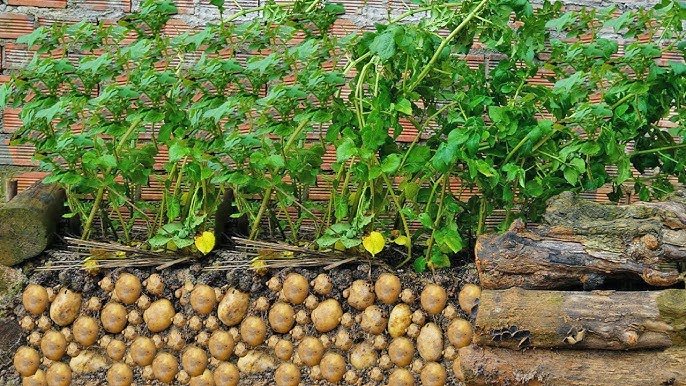
Timing is critical. Begin pruning when plants are actively growing but before flowering. Once the plant starts flowering, tubers begin to develop rapidly, and pruning too late may stress the plant and reduce yield.
Pests and Diseases
Healthy plants are more productive. Regular pruning and maintenance reduce the risk of pests and diseases. Here are common issues and solutions:
- Blight: Remove affected leaves promptly and avoid overhead watering.
- Aphids: Spray with insecticidal soap or neem oil.
- Wireworms and beetles: Handpick pests and rotate crops annually to prevent infestations.
Good air circulation achieved through pruning is key to preventing fungal diseases like blight and powdery mildew.
Harvesting Your Potatoes
Potatoes are ready to harvest when the plant begins to yellow and die back, typically 70–120 days after planting, depending on the variety. Here’s how to harvest efficiently:
- Loosen the Soil: Use a trowel or fork to gently lift the tubers from the soil.
- Handle Carefully: Avoid bruising the potatoes, which reduces storage life.
- Cure if Needed: For long-term storage, cure potatoes in a cool, dark, and dry area for a week or two to toughen the skins.
If you prune and care for your plants properly, you may find that each plant produces more and larger tubers than unpruned plants.
Tips for Maximum Production
- Use High-Quality Seed Potatoes: Healthy seed potatoes produce stronger plants.
- Practice Crop Rotation: Avoid planting potatoes in the same soil every year to reduce disease risk.
- Consistent Watering: Ensure the soil stays evenly moist throughout the growing season.
- Balanced Fertilization: Avoid excessive nitrogen; focus on potassium and phosphorus for tuber development.
- Prune Wisely: Remove damaged leaves and thin excess foliage without overcutting.
- Monitor for Pests: Early detection prevents damage and supports plant vigor.
Benefits of Proper Potato Pruning
Pruning potato plants correctly offers several advantages:
- Higher Yield: More energy is directed to tuber production.
- Better Quality: Potatoes grow larger and more uniform.
- Reduced Disease Risk: Improved air circulation prevents fungal infections.
- Stronger Plants: Balanced foliage promotes healthy, vigorous stems.
Even a small adjustment like pruning excess leaves can make a noticeable difference in your potato harvest.
Conclusion
Growing and pruning potato plants is a simple yet highly effective strategy for maximizing production. By following these steps—selecting healthy seed potatoes, planting properly, hilling, pruning excess foliage, and maintaining consistent care—you can enjoy bigger, healthier potato harvests.
Pruning may seem counterintuitive, but it allows the plant to channel its energy into developing robust tubers underground. Combined with regular maintenance and pest control, pruning ensures your potato plants are productive and resilient.
Whether you are growing potatoes in your backyard, raised beds, or containers, applying these techniques can transform your harvest. Start this season with proper planting, careful pruning, and consistent care—and you may be surprised at the impressive bounty your potato plants can produce.
